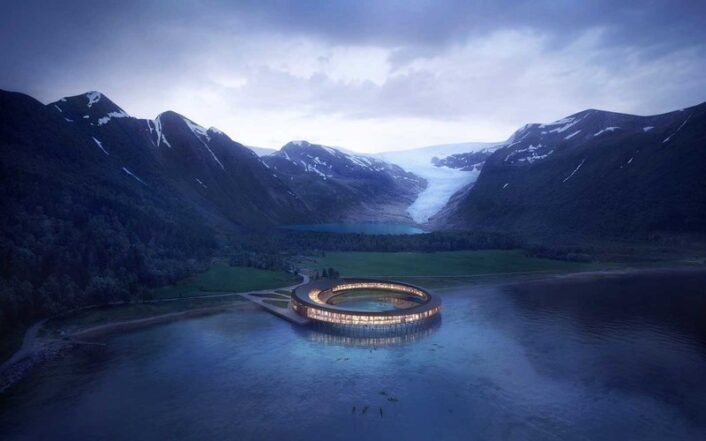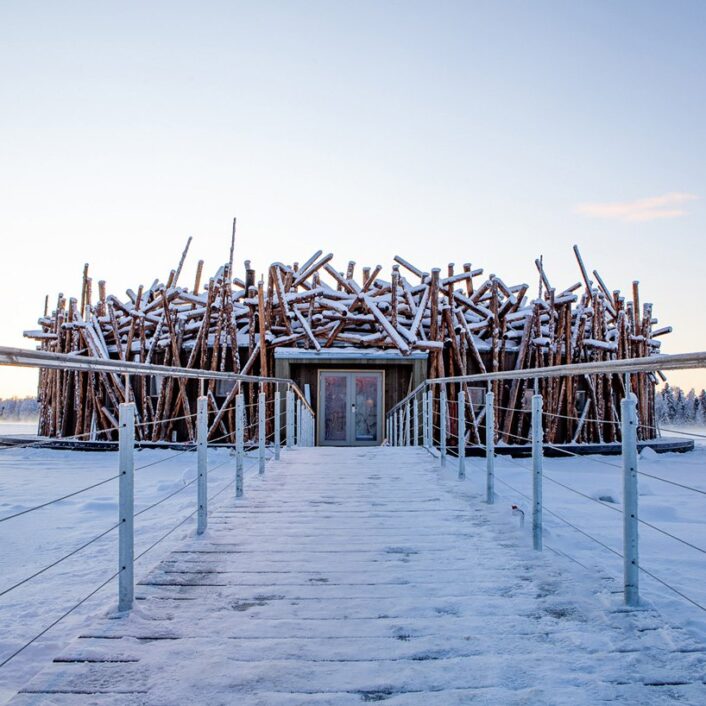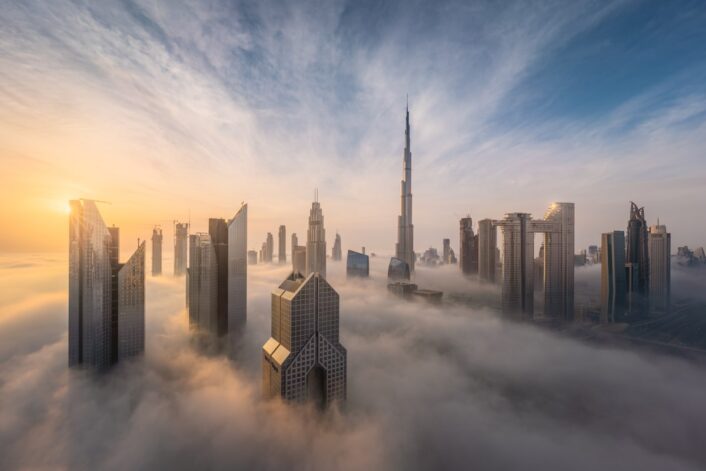Fine Art
Evgenia Arbugaeva’s photographs of the Russian Arctic
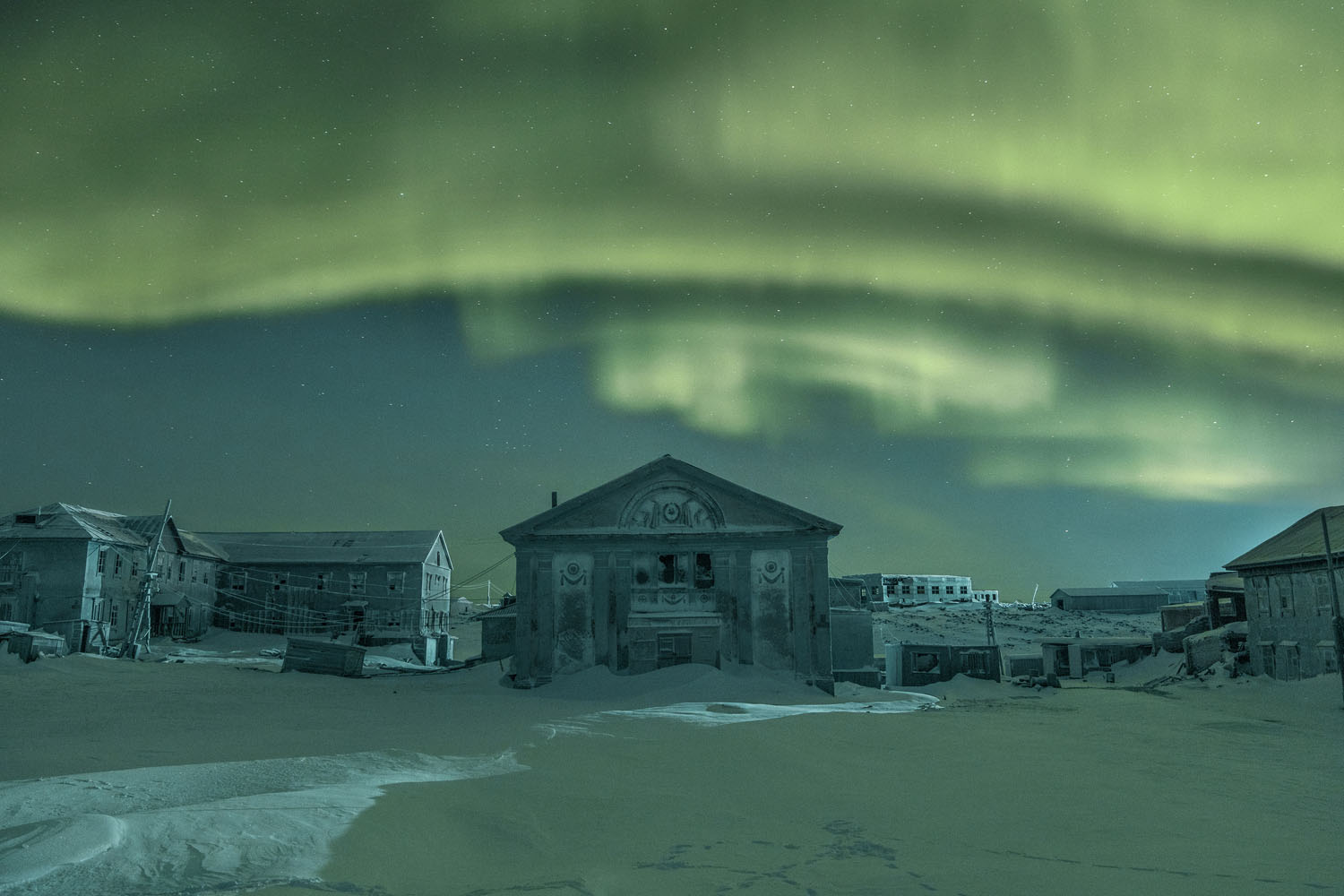
From Arbugaeva’s Dikson series; a ghost town that was once the capital of the Arctic under Soviet rule.
Image courtesy of: The Calvert Journal
A photographer of the Russian Arctic, Evgenia Arbugaeva grew up in a small and remote town on the northern coast of Siberia. For the past ten years, the young photographer has been chronicling the lives of the people living in the far north. Funded by National Geographic, Arbugaeva was tasked with capturinging the people and economic changes in Russia’s arctic region using a perspective that only a local could possibly have.
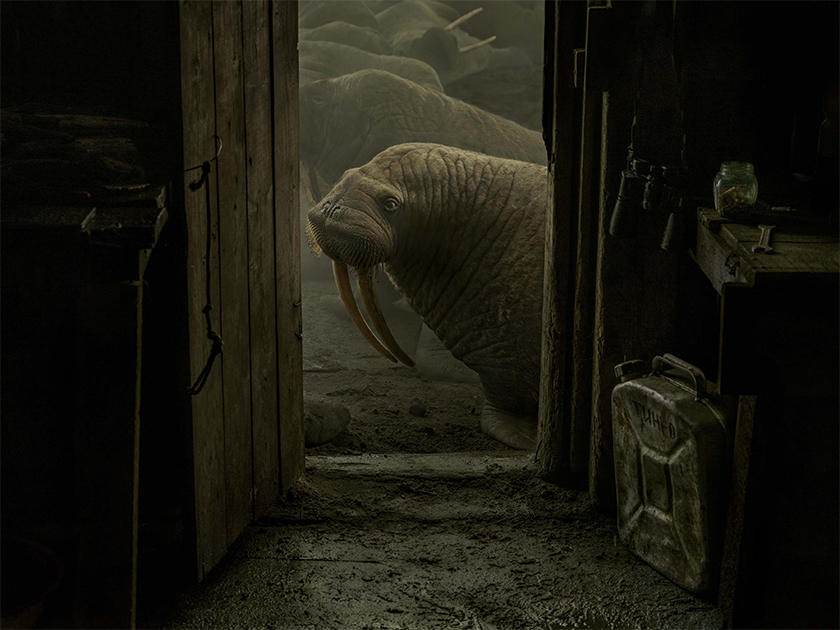
The northern lights have a unique way of transforming the photographs in a fluorescent green haze. Specifically, these walruses were stranded on shore due to the lack of sea ice, a new and sobering phenomenon.
Image courtesy of: Juxtapoz
One of the photographer’s first series took place in 2013 when she visited 22 extremely remote meteorological stations around the Russian Arctic. At one stop, Arbugaeva met Slava, a solitary stationmaster that still uses morse code to communicate his measurements of the wind. This gentleman has been living alone for many years at Khodovarikha on the Perchora Sea. In addition to the photographs that emerged, the conversation she had with Slava was extremely insightful. When asked if he was lonely, the stationmaster reported (courtesy of Calvert Journal), “Every day is not the same here. Look, today you saw the bright Aurora Borealis, a very rare phenomenon on thin ice covering the sea. Wasn’t it great to see the stars tonight, after they were hiding from us behind the clouds for over a week?”
Finding joy and beauty in an environment that is extremely harsh and difficult is one specific reason behind Arbugaeva’s project. Slava, for example, portrayed a true and gentle way of seeing the Arctic… for example Slava shared the joy he feels in the slight changes exemplified in the light and in the sea. Everyday lives that appear mundane and ordinary are not necessarily what they seem. This remarkable journey resulted in four series that were on display at London’s The Photographers’ Gallery.
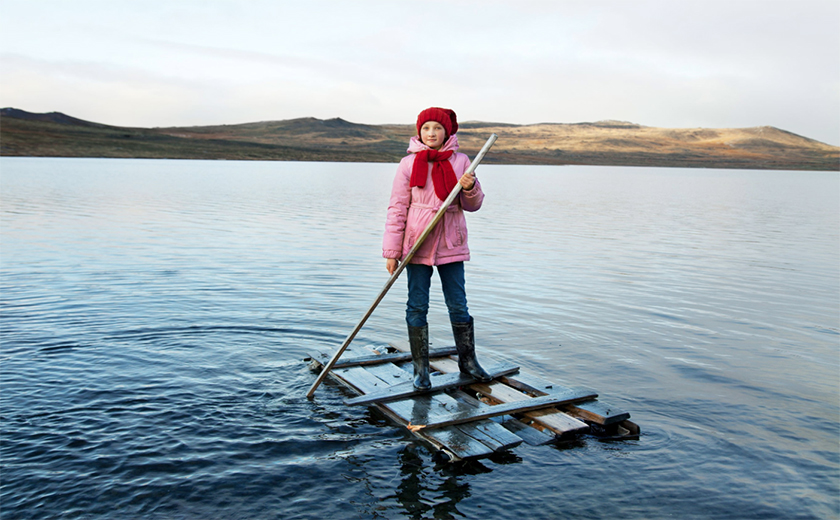
An adventurous spirit that lives in Tiksi, the young girl reminded the photographer of herself at that age. Arbugaeva currently lives in London, but she returns to the Arctic every few month in order to “cleanse herself.”
Image courtesy of: FAR Center for Contemporary Arts
The Russian Arctic is an enormous region; one which was on pace to expand during the height of the USSR. Towns like Tiksi where Arbugaeva grew up served as ports and military bases for many years. Like other kids who grew up in similar locations, the tundra was Arbugaeva’s playground. However with the fall of the USSR in 1991, the towns that were built during the dreams of an Arctic expansion lost close to 80% of their population. Suddenly, the photographer’s family was in a city rather than being thousands of miles away from any metropolis.
As for Arbugaeva, she moved to Moscow in order to study art management; thereafter, she left for New York City to take documentary photography classes. Quickly after graduation, Arbugaeva returned to Tiksi; she says that this was “a way for her to stay connected with the landscape of her childhood.”
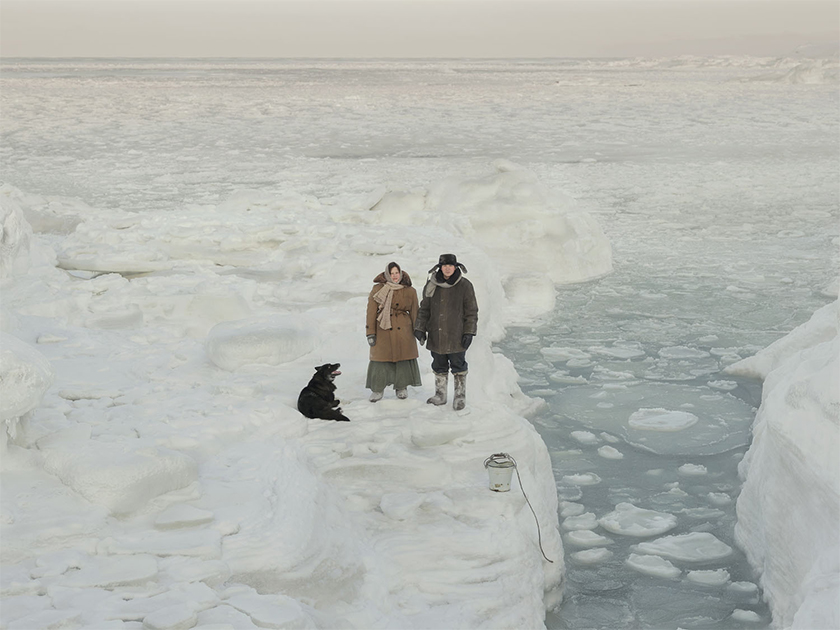
A young couple, both meteorologists and lighthouse keepers live isolated on the Kanin Nos Peninsula.
Image courtesy of: Calvert Journal
Arbugeava’s photographs depict the quiet and calm side of life in the Russian Arctic; these are the individual stories that she tells with a sense of serenity. Usually with a palette of grey and white, the colors in Arbugeava’s photographs come from the sky. Domestic settings, ones not that different than those of people who live in cities, emit a sense of normalcy and bring forth a feeling of connection.
Some photographs are more dramatic and tell a story that is unique to the Arctic… one that cannot be reproduced anywhere else. Specifically and distinctive are the images of Chukchi men hunting a walrus in the far region of Chukotka. Maintaining the time-honored traditions of their ancestors illustrate the uniqueness of these Arctic inhabitants. The Chukchi community has maintained the importance of living off the land and the sea. For example, these individuals consume whale meat as a main part of their diet, and asking the walrus for forgiveness for the killing.
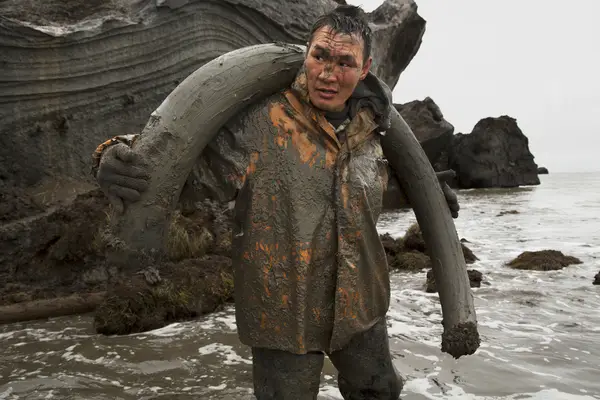
Slava Dolbaev searches for tusks on the eroding coasts of Bolshoi Lyakjovskiy Island.
A wooly mammoth hunter with a tusk that she discovered. Siberia is now home to a new industry of ivory trade that is the result of millions of discovered mammoth tusks due to the melting permafrost. Finding these tusks has become an extremely lucrative operation and in essence, it now offers a “booming economic cornerstone” for the region.
Image courtesy of: Buzz Feed
Avbugaeva’s photographs focus, indirectly, on climate change. For her audience, the Russian Arctic images appear to be focused on cold temperatures; however for those living in the region, the warming temperatures have been detrimental to their way of life. What will happen to the Chukchi community once the walruses and whales migrate or become extinct? What will the meteorologists do once they are no longer needed to study the climate? What will change for the nomadic reindeer herders once they no longer have plentiful reindeer to follow?
Arbugaeva says it best (courtesy of Lens Culture), “In the age of urbanization and technological progress these people have maintained an ability to live in complete harmony with nature and each other.”
